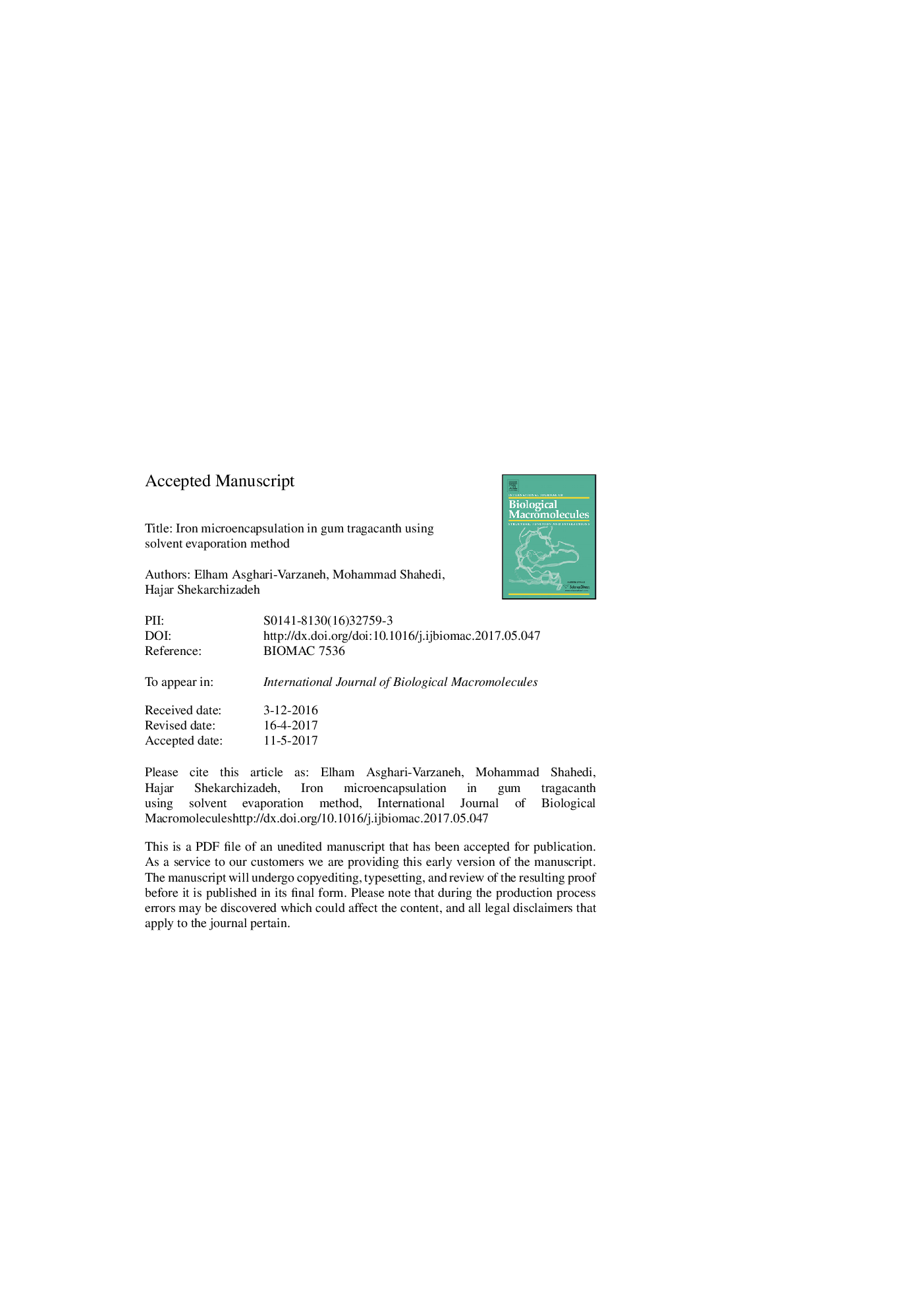| Article ID | Journal | Published Year | Pages | File Type |
|---|---|---|---|---|
| 5511895 | International Journal of Biological Macromolecules | 2017 | 28 Pages |
Abstract
In this study iron salt (FeSO4·7H2O) was microencapsulated in gum tragacanth hydrogel using solvent evaporation method. Three significant parameters (ferrous sulfate content, content of gum tragacanth, and alcohol to mixture ratio) were optimized by response surface methodology to obtain maximum encapsulation efficiency. Ferrous sulfate content, 5%, content of gum tragacanth, 22%, and alcohol to mixture ratio, 11:1 was determined to be the optimum condition to reach maximum encapsulation efficiency. Microstructure of iron microcapsules was thoroughly monitored using scanning electron microscopy (SEM). The microphotographs indicated two distinct crystalline and amorphous structures in the microcapsules. This structure was confirmed by X-ray diffraction (XRD) pattern of microcapsules. Fourier transform infrared (FTIR) spectra of iron microcapsules identified the presence of iron in the tragacanth microcapsules. The average size of microcapsules was determined by particle size analyzer. Release assessment of iron in simulated gastric fluid showed its complete release in stomach which is necessary for its absorption in duodenum. However, the use of encapsulated iron in gum tragacanth in watery foods is rather recommended due to the fast release of iron in water.
Related Topics
Life Sciences
Biochemistry, Genetics and Molecular Biology
Biochemistry
Authors
Elham Asghari-Varzaneh, Mohammad Shahedi, Hajar Shekarchizadeh,
